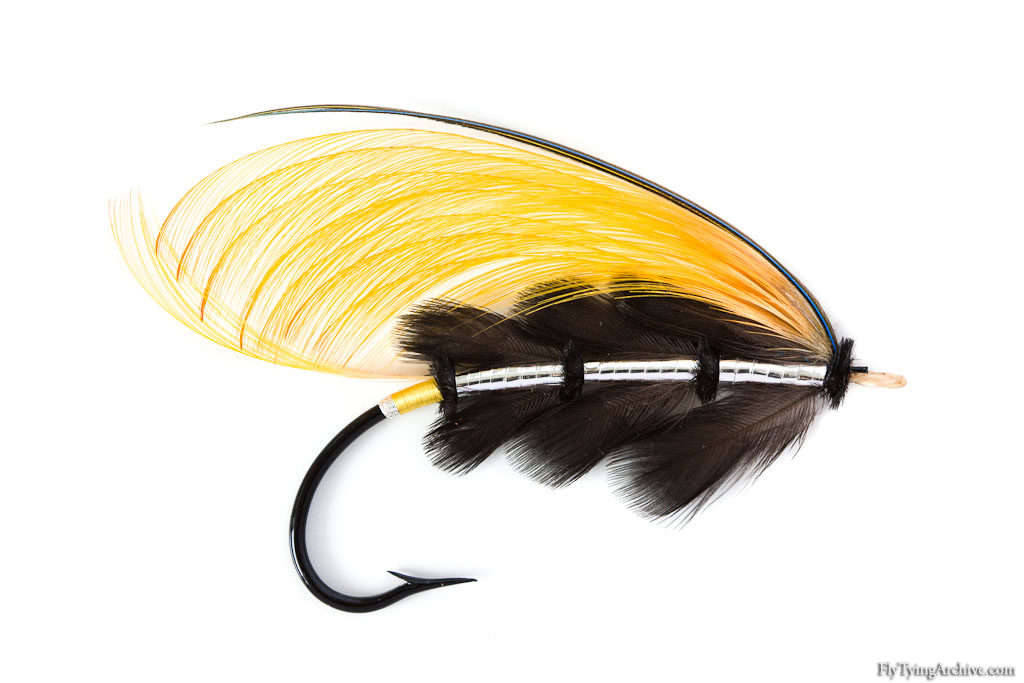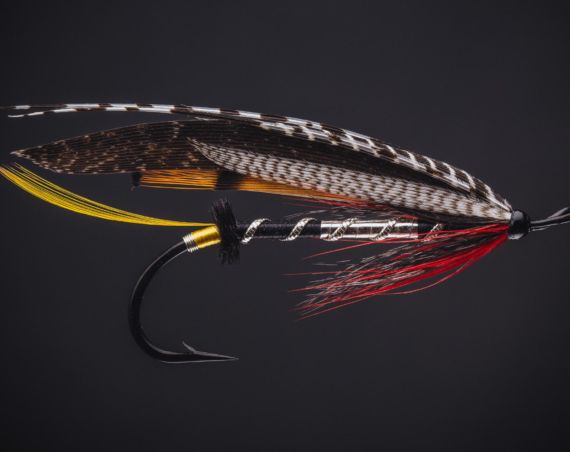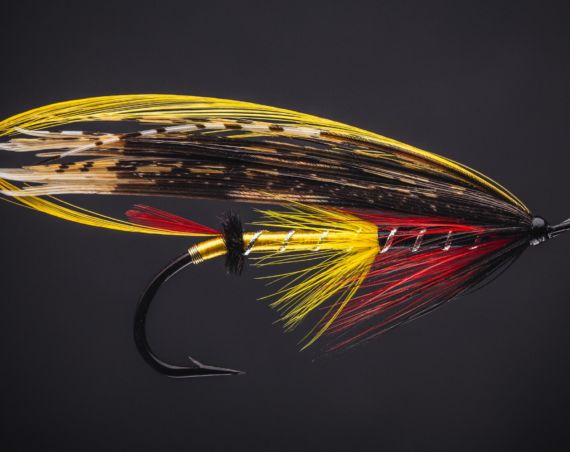The “Black Prince”
Major John Popkin Traherne’s flies are recognized by many as the most beautiful salmon flies ever created. Many of them have fullfeather wings which has never been too common in salmon flies. They were first introduced by Traherne’s good friend George Kelson in his articles in Fishing Gazette.
When tying a topping wing try to select toppings from the same head and tie them in at he very end. This thicker part of the stem is easily flattened with pliers and makes tying the toppings on top of each other easier. But it’s not an easy wing to tie by any means.
Here’s what Kelson had to say about this pattern in July 19th 1884 Fishing Gazette
“When this fly is wanted smaller than the illustration, natural black hackles should be used instead of the feathers on the body, which, though flaccid, are not weak, but malleable, and have a yielding, leech-like appearance in water terribly seductive. Whole feathers, though, are not often used as hackles, because they are inanimate in the water; but the discovery here was indeed a grand one.
Many of the whole feathers that are used in wings are not only to a certain extent stubborn, but are intended to be stationary, simply to form a background for fibres of other varied shades over them to be shown to greater advantage – take for instance, the tippet in the “Butcher.” But in this pattern, as in other of these novelties, these “legs” are left to do duty alone without other facial union. The golden topping element, in dark water, when the “B. P.” is always more successful, can claim but a trifling share of commendation; but in bright water, the sting of disappointment may often be averted, especially in a tumbling torrent, by this admirable contrast – these life-like. beguiling “decoy ducks” in the wing. Having the illustration, the fly may be described :
Tag: Silver twist and golden silk (the same shade as toppings).
Tail: Topping.
Butt: Black herl.
Body: Three equal divisions of silver tinsel, butted, and with two black feathers from the nape of the Indian Crow at top and bottom at the termination of each section, V-shaped, as illustrated.
Wings: Five or six golden toppings.
Horns: Blue Macaw.
Head: Black herl.
Wherever salmon take a fly, at one time or another this bewitching “Circe” would be sure to tempt; but if required spring size – or say, double as large – these black feathers would be useless, and those from close under the blue striped feathers in the wing of the jay, should be selected, and they will answer admirably, especially if the angler has faith and takes pains. But persistence is often forged hard in the flame of fashion; in fact, the fascination for old standard flies – used, too, in the same customary way – is almost universal, and with some of us almost irresistible.
It is however, astonishing how a “new acquaintance” will take at times; dressed in sombre array, or even gaudy glitter – a decided change – a “something they have never before seen” is unquestionably the fly to use in any fantastic way when salmon are immovable. Allow a quarter of an hour’s rest if you can get in front of your fish, and, a yard from the fly, fix two or three swan shot; cast, and let the fly remain perfectly still a few feet before and in line with the fish for three or four minutes; then drag it gently, say a couple of feet, and give it a short, sharp snatch; if that fails, try a prawn. Great care must be taken to see that the fly is perfectly made, so that it fishes evenly, for if it wobbles the last atom there will be no recognition.“




